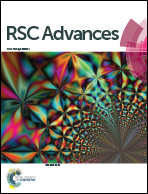Self-humidifying membrane electrode assembly with dual cathode catalyst layer structure prepared by introducing polyvinyl alcohol into the inner layer
Abstract
A novel self-humidifying membrane electrode assembly (MEA) with a dual cathode catalyst layer (CL) structure by introducing hydrophilic organic polymer (polyvinyl alcohol, PVA) in the inner layer has been successfully prepared. This MEA shows excellent self-humidification performance under low-humidity conditions compared to the MEA with a single cathode CL and the MEA with a dual cathode CL structure prepared by adding PVA into the outer layer. A sample containing 3 wt% PVA in the inner CL achieves a current density as high as 910 mA cm−2 at 0.6 V, operating at 60 °C and 20% relative humidity (RH) for both anode and cathode. This sample also shows excellent stability at low humidity: keeping the MEA discharged at a constant voltage of 0.6 V for 50 hours at 20% of RH, the attenuation of the current density is less than 15%.


 Please wait while we load your content...
Please wait while we load your content...